Spring has sprung in Harrisburg! So when I was deciding what National Register resource to focus on for this week’s blog post, my office mate/dining room table neighbor/husband suggested we take a walk through Harrisburg Cemetery, listed in the National Register in 1985.
And what a beautiful afternoon it was! All the photos you will see in this post were taken by my 10 year old assistant/daughter, who declined to be photographed herself.
You can enter through a gate at 13th street, just off the State Street Bridge – its really just a short distance from the PA SHPO office in the Keystone building!
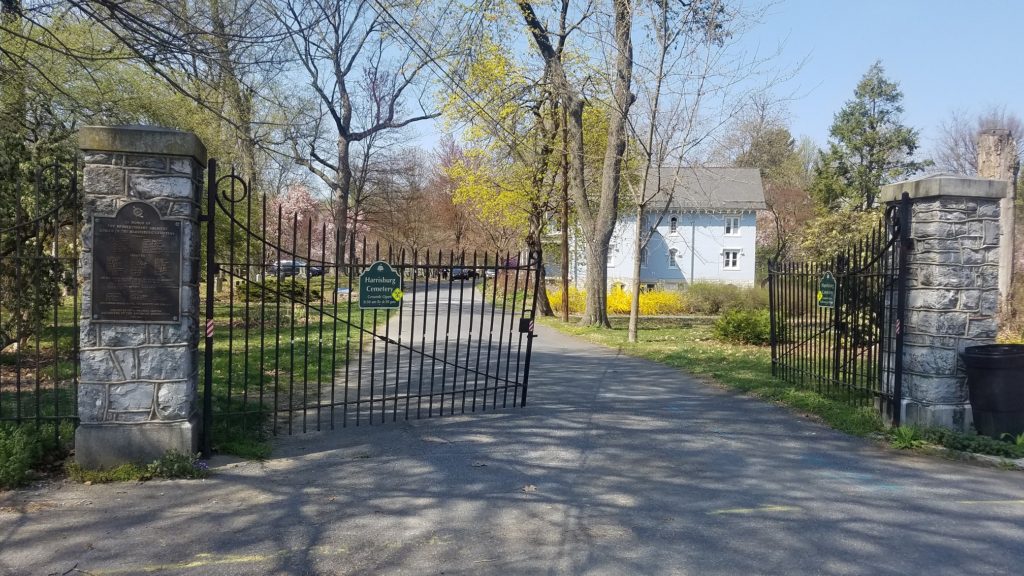
In the early 1840s, cemeteries in Harrisburg were small and scattered throughout the city, in some cases likely impeding progress and city growth.
In February of 1845, the State General Assembly voted to establish the Harrisburg Cemetery Association, which purchased 12 acres of land from a local farmer, Henry Herr. The land afforded a tremendous view of the city from a bluff.

Overtime additional land was added, until it reached the 35 acres that stands today. The current boundaries were reached by 1971.
The cemetery is significant under several areas of significance – architecture, art, and sculpture, though if we were going to re-write the nomination today we would likely add significance in design and landscpe.
It was part of the Rural Cemeteries trend popular between the 1830s and 1870s. (Interested in reading more about cemetery design? Check out this developmental history webpage!) Rural cemeteries like this were created in places chosen for accessibility and beauty and was designed to take into account the natural landscaping that already existed.
The nomination says it “physically expresses the rise of romantic and picturesque landscape philosophies of the mid 19th century … it served the purposes of both consolidating Harrisburg’s prior burial locations and offering a park like setting for the recreational enjoyment of the living as was popularly pursued in cemeteries at the time.”
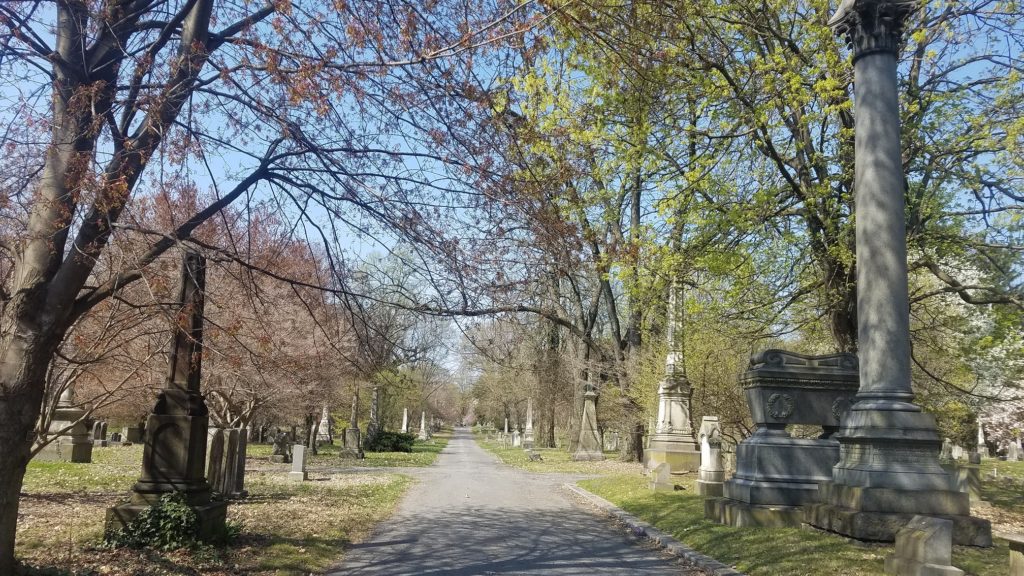
Other examples of rural cemeteries include Pittsburgh’s Allegheny Cemetery and Philadelphia’s Woodland Cemetery.
But beyond the natural beauty of the cemetery, the thing you notice first when you enter the cemetery is a striking blue building – the Caretaker’s House (the current office), built in 1845.

Constructed in a Gothic Revival style, the building is notable because it was constructed in a style that was not yet popular in Harrisburg at that time. According to the nomination, it was “popular in larger cities in the 1820s, and the 1840s was a bit early for Harrisburg, thereby displaying some innovation on behalf of the architect.”
The stones were frequently ornate and elaborately decorated, and included many obelisks.
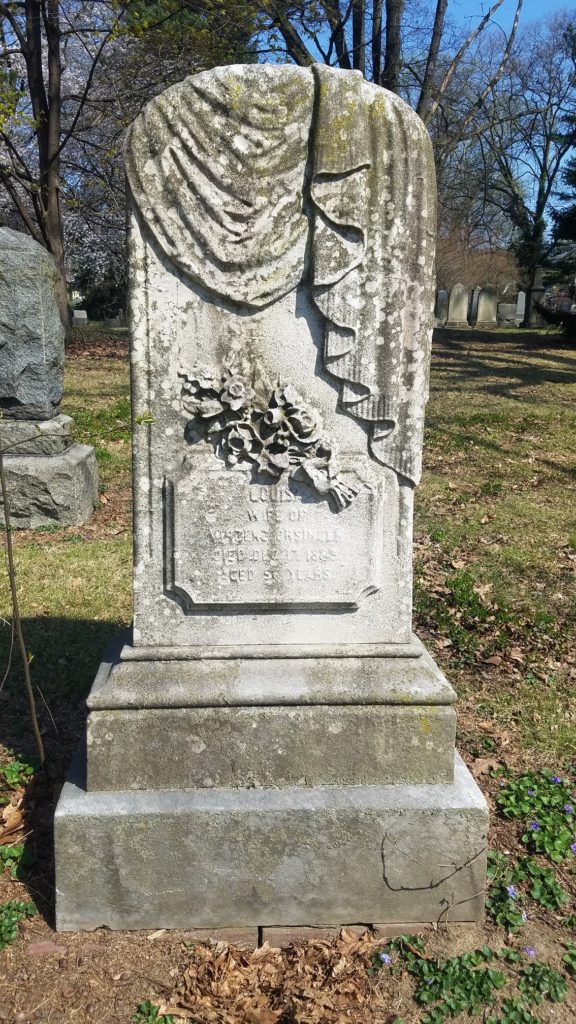
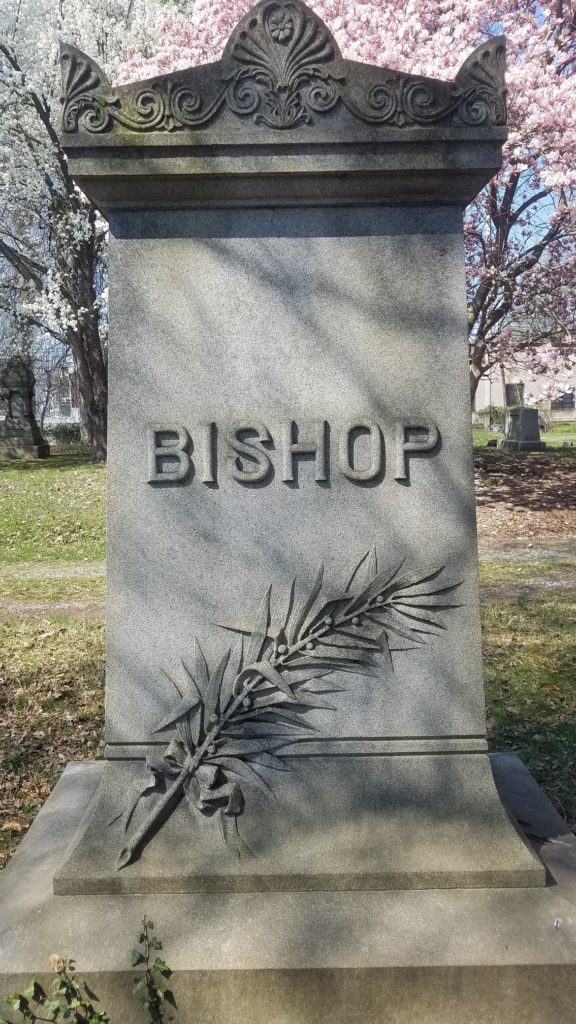
So many obelisks, in fact, that a section of a management document from 1876, noted
“There is another suggestion which the managers feel it their duty to make to lot holders; they trust it will be received as an evidence that they are anxious to unite in encouraging an improved taste in monumental sculpture. It has been the frequent remark of visitors – our own citizens, as well as strangers – that a monotony already begins to be apparent in the style and form of the improvements. Obelisk succeeds obelisk, etc., with only slight variations, and if this is continued we shall see in time too dull a uniformity to strike the mind with agreeable sentiments.”
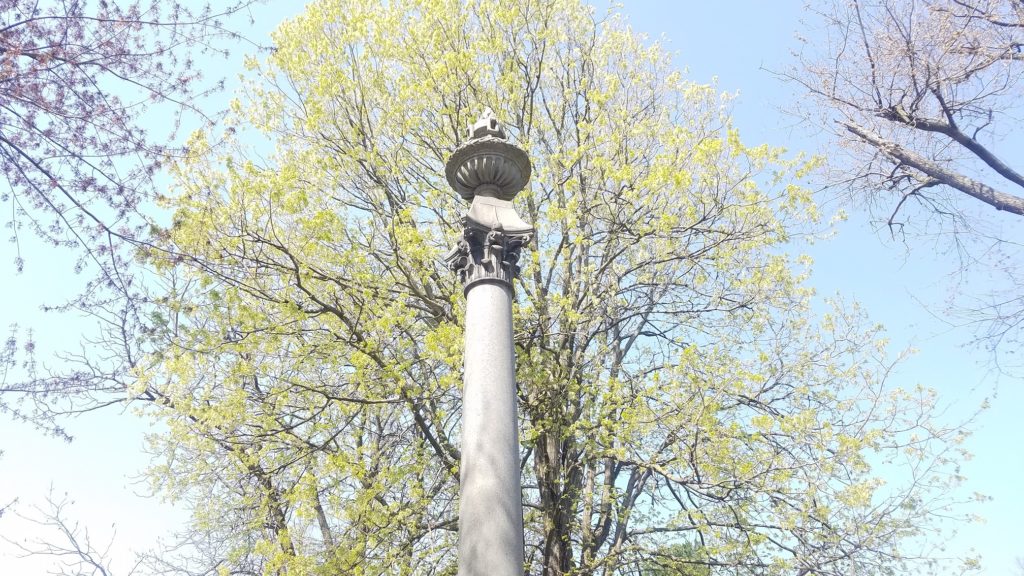
One monument that caught our eye, and that of the nomination author, was a striking Gothic spire in the interior of the cemetery – the only one of its kind, and “richly detailed in true Gothic form with finials and tracery moldings.”
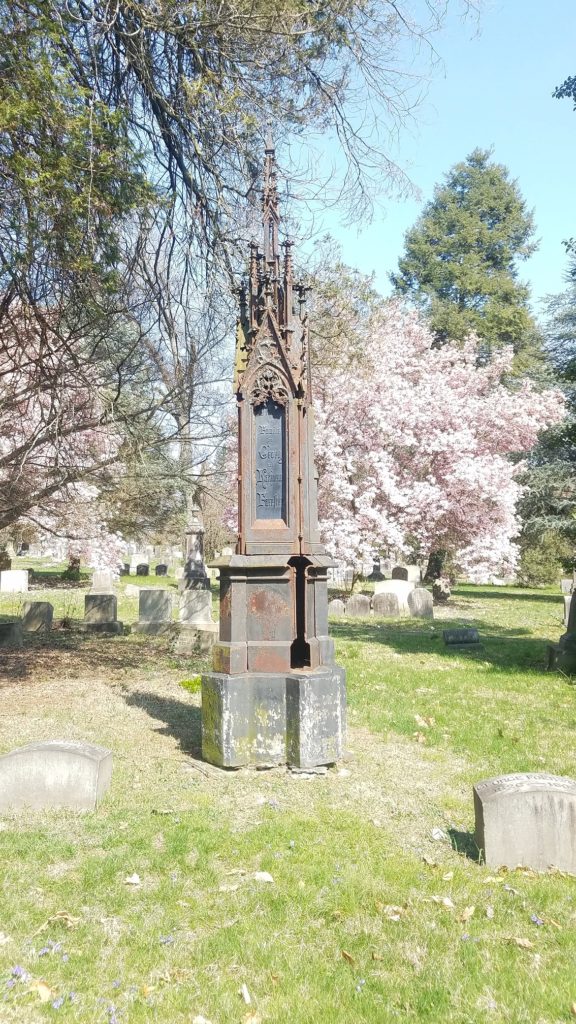
Later additions to the cemetery included a “massive shrub and tree planting” effort in the 1900s, which added over 500 trees, including “Elm, Mountain Ash, Tulip, Sugar Maple, Red Maple, Pin Oak, Red Oak, White Oak, Linden, and Flowering Dogwood.” The day we were there, a group of Master Gardeners were working on a project to label the trees.
A section of much older stones, predating the cemetery, comes from several other cemeteries that were consolidated here.
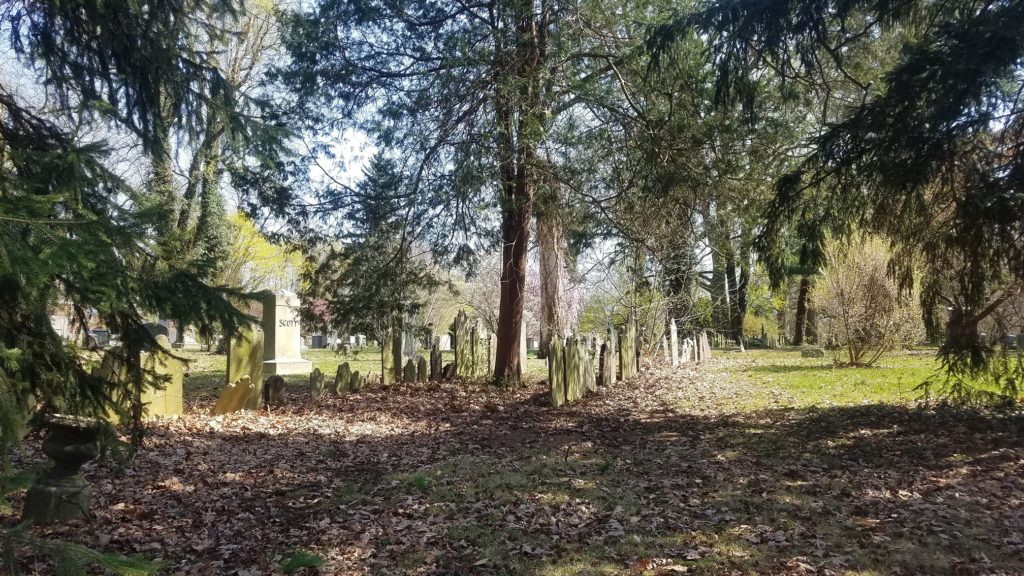

Civil War stones also appear in another section. According to a Harrisburg Magazine article,
“During the Civil War, the Commonwealth of Pennsylvania purchased lots to bury casualties from the Camp Curtin post hospital. A total of 155 men from both sides were laid to rest in the Harrisburg Cemetery, along with two civilians, the wife of Peter Roberts in 1862 and the other a child of John Schreckenhurst in 1863.”
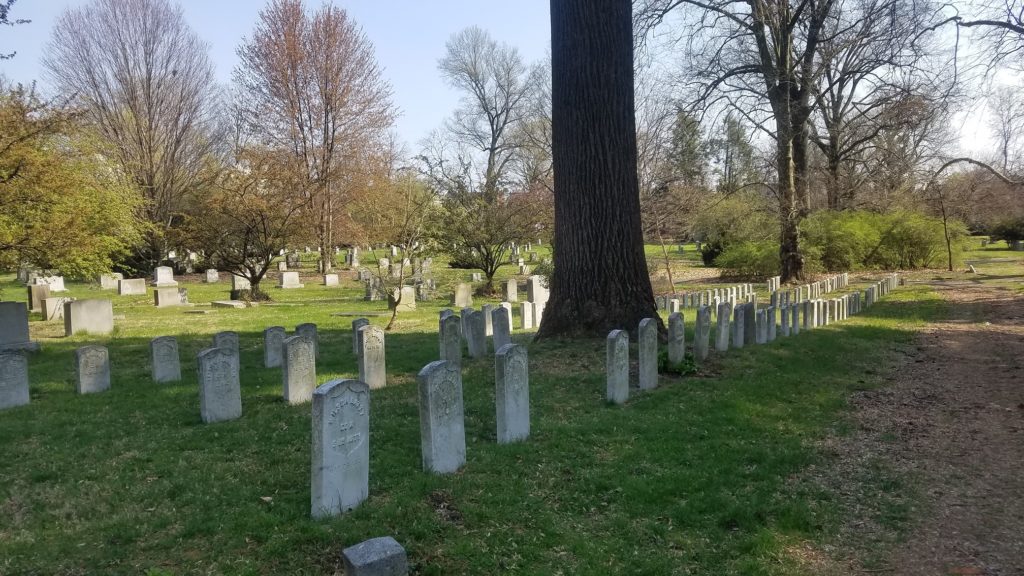
There is so much to learn here about the roots of Harrisburg – it contains the graves of four governors, numerous local and state politicians, and numerous local icons.
It continues to be a place of “enjoyment of the living” and a place to remember those who have come before us. My 10 year old and I had a lovely afternoon as I explained what the significance of this place was and why we had come.
In the end, she allowed one photo to be taken to prove she was there, too.
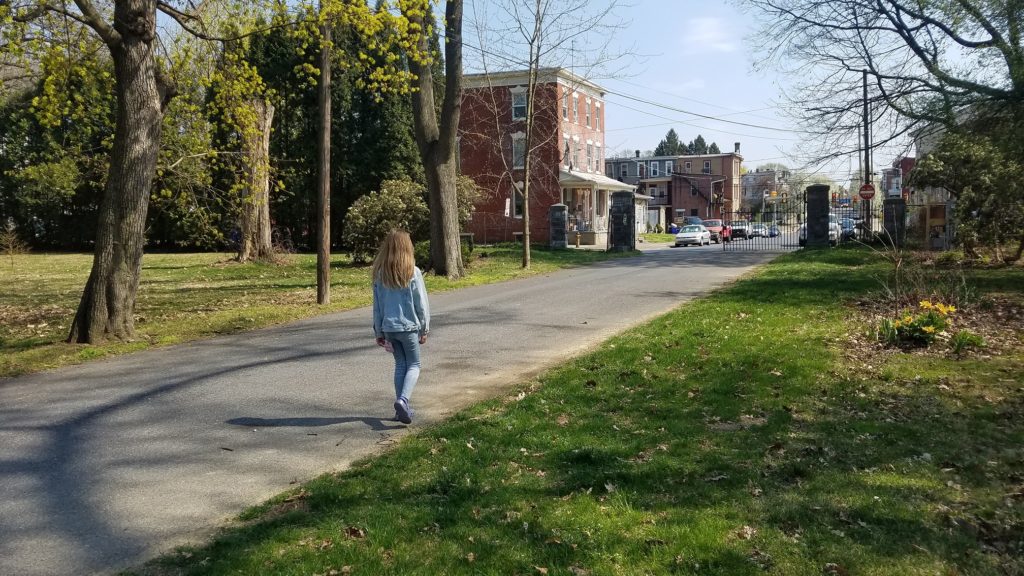
Comment Policy
PHMC welcomes and encourages topic-related comments on this blog. PHMC reserves the right to remove comments that in PHMC’s discretion do not follow participation guidelines.
Commenters and Comments shall be related to the blog post topic and respectful of others who use this site.
Commenters and Comments shall not: use language that is offensive, inflammatory or provocative (this includes, but is not limited to, using profanity, obscene, or vulgar comments); disparage other commenters or people; condone illegal activity; identify the location of known or suspected archeological sites; post personal information in comments such as addresses, phone numbers, e-mail addresses or other contact details, which may relate to you or other individuals; impersonate or falsely claim to represent a person or an organization; make any commercial endorsement or promotion of any product, service or publication.
If you would like to comment on other topics not related to this blog post but related to PHMC, please fill out the PHMC Contact Us Form.

Great history, thank you very much!
Thank you for this overview. This is one of my favorite places (of many in the city) to visit each spring.
I would love more information on this and other Harrisburg cemeteries. Is there a source for more of the history?
How would you like to have / host a free Cemetery Conservation Preservation Workshop at the Harrisburg Cemetery? You could charge what ever you wanted for participation but the qualified instructors will not need to be paid.
I hadn’t been to this cemetery since about 1954 (I was 12 at the time) when my father took me to my grandmother’s grave. His mother died in 1913 giving birth to my father’s sister. Well, I finally made it back to pay my respects and dress up the site a little. But when I arrived on April 6th, 2022 I couldn’t believe my eyes. The cemetery is a complete wreck, where are the people that keep the grounds. I couldn’t even find out where her grave site is, no keeper on site.
I have a grandmother and a great aunt buried somewhere here but I wouldn’t know where to start looking for the graves, Could you tell me where I can find out where Edith Baer born 1883 died 1913 & Jessie Banks born 1884 died 1960 graves are located in the cemetery.
I visited in the fall of 2023, hoping to find the marker for my great-grandparents. Eventually I did find the marker for William Alfred Shadel and Viola Catherine Michael. The stone was completely covered with poison ivy and other vines. I gave myself a bad case of poison ivy when I tried to clear the stone enough to make sure it was the right one. Is there nobody in charge of upkeep anymore? I may have to go back with a bottle of herbicide this summer.
That’s great. I would like to read more about it and the people at rest there. The book on the old 8th Ward has some of the cemetery in it. Its very interesting.
Thanks, and congrats to your daughter for the photos. I’ve been to the cemetery only once. My great-great-grandmother is buried there, along with several of her young children. Their graves are unmarked. I came to your blog searching for details about Harrisburg during the Civil War (great-great grandmother died March 1865 at age 33). Was interested to learn about the soldiers buried there.
Great photos!
Does PHMC have information on the Presbyterian section of the cemetery? Remains were removed from the original cemetery near what is now the Harrisburg transportation center. I’d be interested in knowing where it is located in the cemetery and if there are notable Harrisburg or Pennsylvania who are interred there. Thank you!